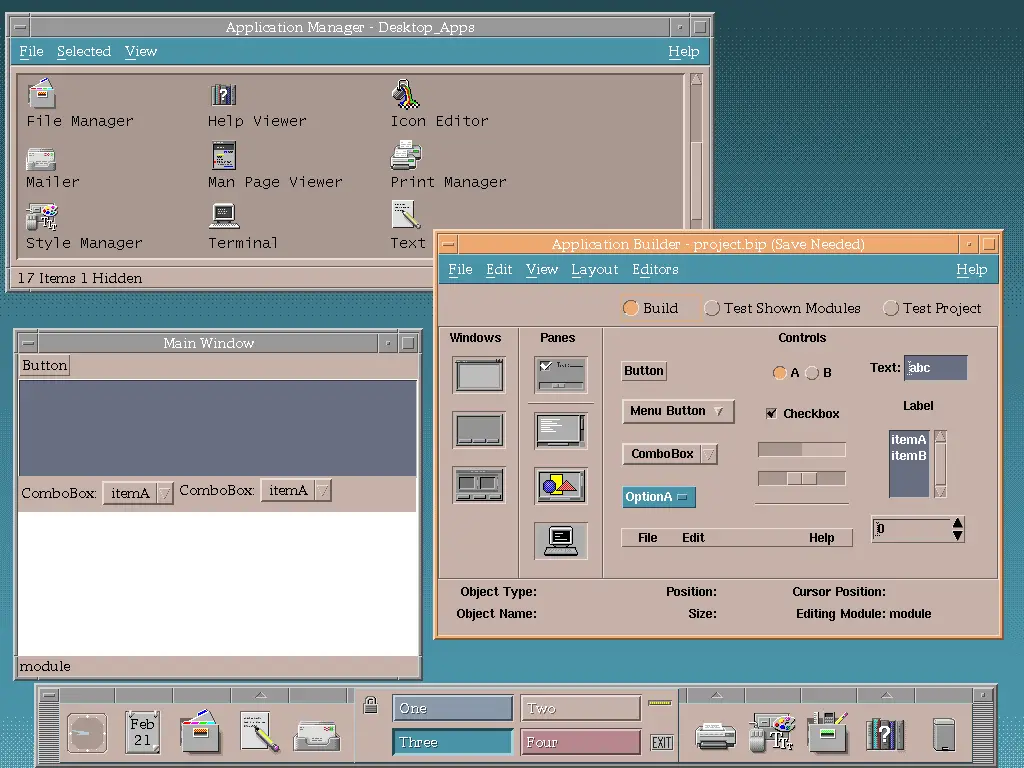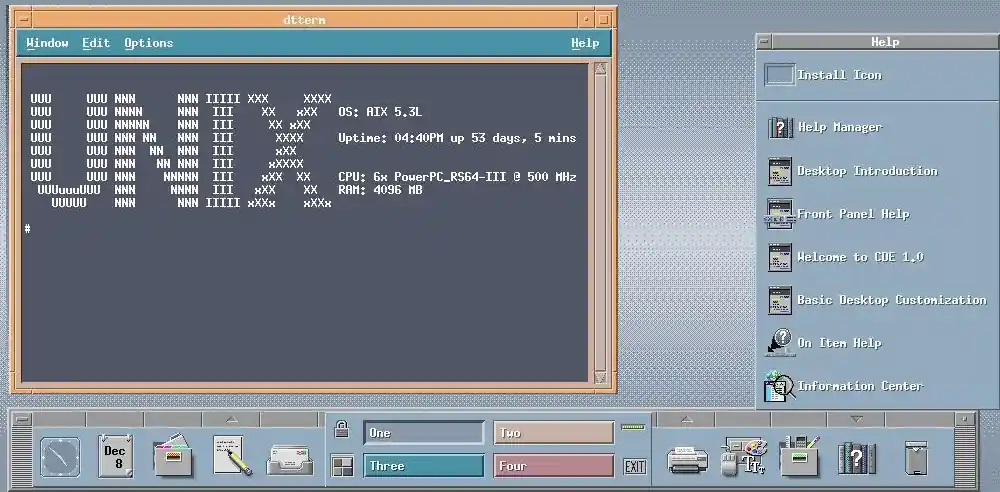The Common Desktop Environment (CDE) stands as a hallmark in the history of graphical user interfaces. Developed through the collaboration of titanic industry players like IBM, Sun Microsystems, and Hewlett-Packard, CDE offered a standardized graphical user interface for UNIX systems. In an era dominated by command-line operations, CDE’s introduction was a significant leap forward, bringing a more accessible and uniform experience to the UNIX industry.
Jump to:

1. What was the Common Desktop Environment (CDE)?
CDE emerged as a robust, industry-standard GUI, leveraging the underpinnings of the X Window System (X11) release 5, the X/OPEN consortium’s specifications, and the OSF/Motif 1.2 toolkit. It was designed to marry functionality with simplicity, providing a consistent user experience across different UNIX platforms.
Core Features of CDE:
- Standard windows-management features enabled users to manipulate windows with familiar actions such as move, resize, and minimize.
- File-system browsing tools with multiple views, allowing efficient navigation and file management.
- Customizable UI management tools, giving users the freedom to alter the aesthetic and functional aspects of their desktops.
- Comprehensive online help features, ensuring support was readily available, enhancing user self-sufficiency.
- Multiple workspaces, effectively increasing the desktop real estate and aiding multitasking.
2. The Pioneers of CDE
Several systems adopted CDE as either the primary or an alternative GUI option. Each iteration of CDE was tailored to the underlying system’s capabilities, ensuring that the core philosophy of a unified experience was maintained.

Systems That Adopted CDE Include:
- IBM AIX: Integrated CDE to provide a stable and cohesive user experience.
- Digital UNIX & Tru64 UNIX: Embraced CDE as part of their user interface offerings.
- HP-UX: Starting from version 10.10, CDE became a staple component.
- IRIX: Briefly offered CDE as an alternative to its IRIX Interactive Desktop.
- OpenVMS, Solaris, UnixWare, UXP/DS: Incorporated CDE to align with industry GUI standards.
- Red Hat Linux: Received CDE ports through third-party endeavors, expanding its reach into the Linux domain.
3. Conclusion
The Common Desktop Environment represents an era where standardization efforts were paramount to system usability and cross-compatibility. While CDE has largely been supplanted by more modern GUIs, its philosophy continues to influence the design and development of user interfaces. CDE stands as a testament to the power of collaboration and standardization in the technology sector.
4. References
- “The X Window System,” by Scheifler, Gettys, and Newman, MIT Press.
- “OSF/Motif Style Guide,” by Open Software Foundation, Prentice Hall.
- IBM AIX documentation
- A Guide to HP-UX Document Collections
- Solaris User’s Guide
- “UNIX Systems for Modern Architectures,” by Syed Mansoor Sarwar, Robert Koretsky, and Syed Aqeel Sarwar, Addison-Wesley.
The legacy of CDE, with its commitment to a cohesive and user-friendly environment, paved the way for the GUIs that we encounter today. Though its presence has waned, its impact remains indelible in the annals of computing history.